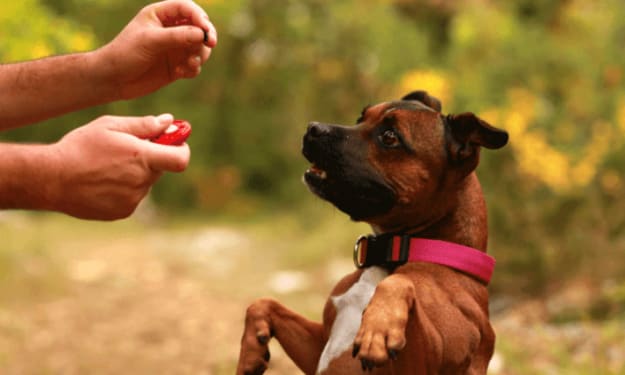A Dog Training Guide For Beginners
How To Start Training Your Dog By Yourself

The "Stay" command is an essential part of dog training. It will make your dog more obedient and easier to control. It will be especially useful when you have guests over and don't want to get distracted. This command should be practiced first. Once your dog has mastered the "Sit" command, use the "Stay" command as a reward. If your puppy is still chewing on his food, reward him by petting him on the floor. After your dog has stayed for a few seconds, gradually increase the number of steps you take before rewarding him with affection.
In addition to the "Sit" command, you should also teach your dog to obey commands by enforcing boundaries. When training a dog, start with short distances (three to four feet), and gradually increase the distance until your dog can obey the command. As you progress with the training, you can gradually increase the distances until you can drop the leash. Once your pet complies with the command, you can show your love and affection for him.
Remember that your dog needs time to relax. Regular solo time helps your dog unwind. Provide him with a quiet, dedicated space to relax. Let your dog decide how to spend this time. Lastly, be realistic. A dog learns at different rates and sometimes requires longer than you think. So, be patient and allow your dog to progress at their own pace. However, it's important to remember that your training efforts may be short-lived.
The purpose of dog training is to enable your pet to make choices on its own, without prompting. As such, you should set boundaries and enforce them. Try to keep your dog within the same distance for several minutes at a stretch, but gradually increase this distance. When the time comes, you can drop the leash and give him affection. It's a great feeling when you see your dog behave correctly and learn to follow your commands.
A good training method should start by teaching your dog a word that you would not normally use in a conversation. A good name is one that will make your dog feel secure. In this way, you'll avoid frustrating him with unnecessary'sitting' exercises. It's best to use your voice instead of your body language to communicate your expectations. It's also important to remember that your dog's behavior should be consistent. When you have a strong voice, your dog will have more confidence and a sense of responsibility.
In addition to focusing on a person, you should also train your dog to focus on something. This will be equivalent to paying attention to you and responding to cues. A video that shows this can help you train your dog to sit and respond to your voice. This type of training will be effective if it is integrated into your daily routine. The training must be a part of everyday life. It will ensure that your dog understands his responsibility to behave in certain situations.
This training method is based on the concept of generalization. Your dog should associate the exercise with something that is normal and not a punishment. In this case, your dog will understand that the action is rewarding for you, and that you should reward it if it responds well to the command. A dog will not feel guilty if he has to work for it. If he doesn't respond, you should always try to redirect it by introducing him to the new activity.
In addition to the "Come," this exercise involves generalizing your environment. Your dog should be taught that the exercise is not something that is abnormal. You should not allow the exercises to become a reward for bad behaviour. Rather, they should be considered normal and not as a punishment. This will help your dog understand that they are expected to obey your commands. It will be easier for you to teach your dog to behave when you want it to.
The goal of dog training is to help the dog learn the meaning of good and bad. It's crucial to teach your dog to distinguish between these two terms to avoid confusion. As a result, you can avoid confusing your canine companion by making sure they understand the importance of Good and Bad. You can also give them a reward when they do their job perfectly. They'll be more likely to respond well if you have a consistent example of them performing the same task.






Comments
There are no comments for this story
Be the first to respond and start the conversation.